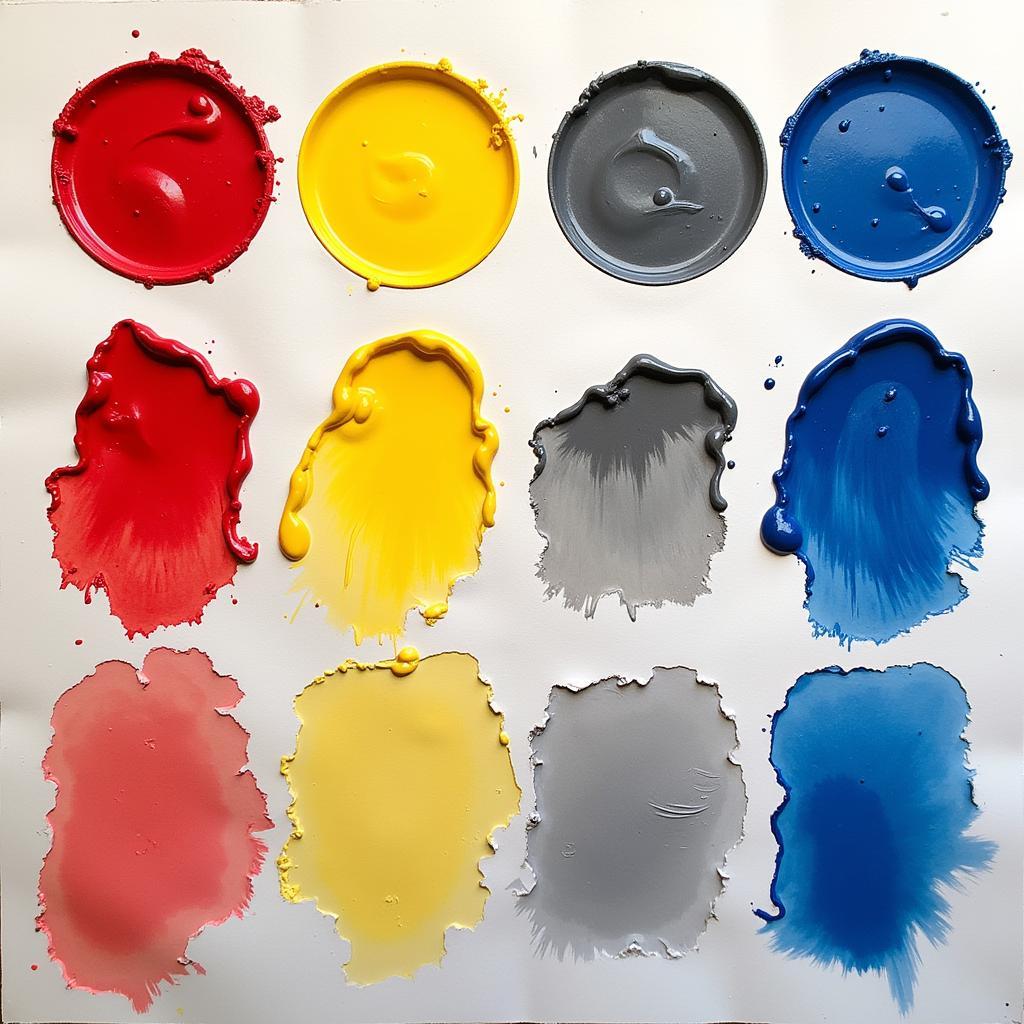Creating realistic skin color, whether for painting, drawing, or digital art, is a challenging but rewarding endeavor. It’s more than just mixing pink or brown; it involves understanding undertones, light, and shadow to achieve a lifelike representation. This guide will delve into the nuances of How To Create Skin Color, equipping you with the knowledge and techniques to bring your creations to life.
Mixing accurate skin tones goes beyond simply choosing a color from a tube. It requires a keen eye for observation and an understanding of the underlying principles of color mixing. This involves recognizing the variety of skin tones that exist, each influenced by factors like genetics, ethnicity, and environmental exposure. Learning to see these subtle differences is the first step toward mastering the art of creating skin color.
Understanding the Basics of Skin Color
To accurately recreate skin color, it’s crucial to grasp the basic building blocks: red, yellow, and blue. These primary colors are the foundation upon which all other colors are built. By understanding how to manipulate these colors, you can achieve a wide range of skin tones. Adding white brightens the mixture, while black darkens it, allowing you to control the value of the skin color.
Beyond the primary colors, understanding undertones is essential. Undertones are the subtle hues that lie beneath the surface of the skin. These can range from warm tones like yellow and peach to cool tones like blue and violet. Identifying the dominant undertone is key to creating a believable skin color.
 Mixing Primary Colors for Skin Tone
Mixing Primary Colors for Skin Tone
Mastering the Art of Mixing Skin Tones
Creating believable skin tones requires more than just mixing paint straight out of the tube. It involves a layered approach, starting with a base color and gradually building up depth and complexity. This can be achieved by layering thin washes of color, allowing each layer to dry before adding the next. This technique creates a richness and depth that mimics the natural translucency of skin.
For example, when painting a portrait, the first layer might be a thin wash of burnt sienna or yellow ochre, depending on the subject’s undertone. Subsequent layers might incorporate colors like alizarin crimson, cadmium red, or ultramarine blue to create highlights and shadows. Don’t be afraid to experiment with different color combinations to achieve the desired effect. Remember, practice makes perfect.
Different Mediums, Different Approaches
The process of creating skin color varies depending on the medium. Oil paints, for example, offer a greater degree of blendability, while acrylics dry quickly, requiring a different approach. Watercolors demand a delicate touch and an understanding of transparency. Digital art presents its own set of tools and techniques, allowing for precise color selection and manipulation. Similar to how you would remove food coloring from skin, blending in digital art can be achieved with different tools. You can learn more about removing food coloring in this article: how to get rid of food coloring on skin.
Regardless of the medium, the underlying principles remain the same. Understanding color theory, light, and shadow is fundamental to creating convincing skin tones. Experimentation and practice are crucial for developing your skills and finding the techniques that work best for you. Just like choosing the right nail polish color for a black dress, selecting the right hues and shades for skin tones requires careful consideration. For more on this, you might find the article on what color nail polish with black dress for formal event helpful.
Tips and Tricks for Realistic Skin Color
- Observe closely: Study different skin tones in real life and in photographs. Pay attention to the subtle variations in color and how light affects the skin. Just like recognizing the color of everyday objects, like a banana, which you can learn about in what is the color of a banana, observing real-life skin tones is crucial.
- Practice mixing: Experiment with different color combinations and proportions. Keep a color mixing journal to track your progress and create a reference for future projects.
- Use a limited palette: Starting with a limited palette can help you focus on the essential colors and understand their interactions.
- Consider the light source: The color and intensity of the light source will affect how the skin appears.
- Don’t be afraid to make mistakes: Learning from mistakes is part of the process. Embrace the journey and enjoy the process of discovery. Just like wondering whether food coloring is washable, which is addressed in is food color washable, don’t hesitate to experiment and learn. Similarly, understanding the color of cat spray, as discussed in what color is cat spray, can be surprisingly relevant to understanding color variations in different contexts.
Conclusion
Creating realistic skin color is a continuous learning process that requires patience and dedication. By understanding the underlying principles of color theory, light, and shadow, and by practicing different techniques, you can achieve stunning results. Remember to observe closely, experiment fearlessly, and embrace the beauty of the human form. With dedicated practice, you can master how to create skin color that breathes life into your artwork.
FAQ
- What are the primary colors used to create skin color?
- What are undertones and why are they important?
- How do I mix skin tones for different ethnicities?
- What are some common mistakes to avoid when mixing skin tones?
- What are some helpful resources for learning more about creating skin color?
- How does lighting affect the appearance of skin color?
- What are some tips for mixing skin tones in different mediums like oil, acrylic, and watercolor?
For any assistance, please contact us at Phone Number: 0373298888, Email: [email protected] Or visit us at 86 Cau Giay, Hanoi. We have a 24/7 customer support team.
